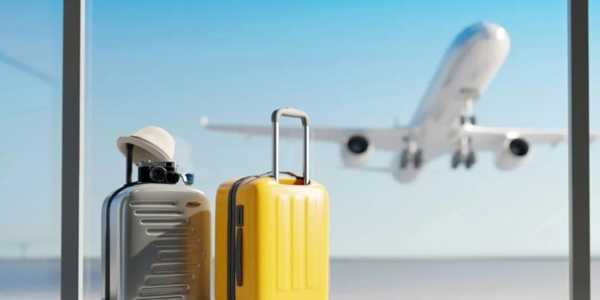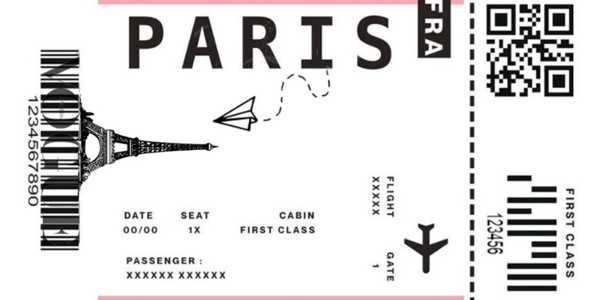Top 10 Tips For Smooth Airport Security Checks
Tired of long waits and unnecessary stress at airport security? Let’s change that. With the right preparation, you can breeze through the process and get to your gate faster. Airport security doesn’t have to be a hassle if you know the tricks to make it smooth and efficient.
Understanding Airport Security Process: What To Expect?
When it comes to air travel, the security process is often the most time-consuming part. But understanding what to expect can make all the difference. Airport security typically involves several key steps: checking in, passing through the security checkpoint, and heading toward your gate. Each step might seem straightforward, but some details can either slow you down or help you speed through it.
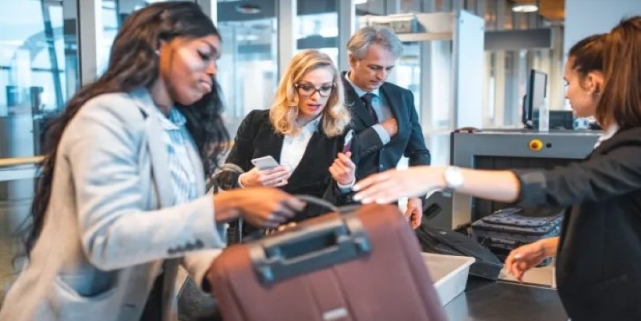
The first stage starts as soon as you arrive at the airport. You'll head to check-in, where you verify your documents and get your boarding pass. After that, it's time for security. At the security checkpoint, the most common hurdles you'll face are related to your carry-on luggage, liquids, and personal items.
What can help speed things up? Preparation. Knowing what to expect at each stage, how to properly organize your belongings, and understanding the rules in place can save you precious minutes and prevent any surprises.
1. Prepare Your Documents In Advance
Airport security can be stressful enough without scrambling to find your documents at the last minute. One of the easiest ways to speed up your security check is to prepare your passport, ID, and boarding pass well in advance of reaching the checkpoint.
A small but effective tip is to organize these essential documents in a travel wallet. This keeps everything in one place and easily accessible. With everything neatly stored, you can avoid the hassle of rummaging through your bag or pockets when it’s time to show your boarding pass or identification.
Additionally, consider keeping a digital copy of your passport and other essential documents on your phone or a cloud storage service. If you happen to misplace something, a digital backup can be a lifesaver. Just make sure your phone is charged, and you're all set.
In case you lose or forget a document, don't panic. Most airports have support desks where you can obtain assistance or reprint your boarding pass. However, being prepared in advance can save you time and stress.
2. Packing Smart: What You Can And Can’t Bring
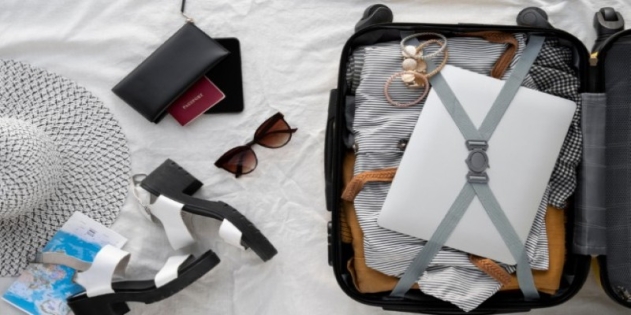
What you pack can make a significant difference in how smoothly your security check goes. There are strict regulations about what you can bring through the security checkpoint, and being aware of these rules can help you avoid delays.
Liquids And Gels
The 3-1-1 Rule is something every traveler should be aware of. Each passenger is allowed to bring liquids, gels, and aerosols in containers of 3.4 ounces (100 milliliters) or less, provided that all of these items fit into a single quart-sized, resealable plastic bag. Ensure that you separate these items from the rest of your carry-on luggage to expedite the screening process.
Prohibited Items
Security personnel will be on the lookout for any sharp objects, self-defense items (such as pepper spray), or flammable liquids. You can pack these items in your checked baggage, but they should never be part of your carry-on. Review the list of prohibited items on the TSA website before packing, just to avoid any surprises.
Electronics And Valuables
Electronics, such as laptops, tablets, and cameras, often need to be removed from your bag and screened separately for security reasons. Having these items readily accessible will help you move through security more quickly. Consider packing them in an easily reachable spot within your carry-on or backpack.
Lastly, keep your keys, wallet, and phone in a small, accessible pocket. This way, you can quickly retrieve them without needing to shuffle through your bag. Staying organized will not only make the process faster but also reduce the chances of losing something important.
3. Dress For Success: How Clothing Can Affect Your Security Check
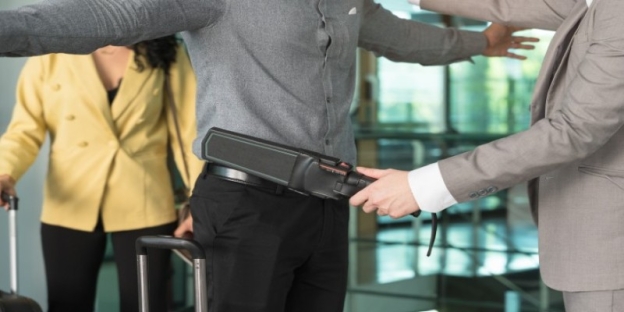
It might seem like a minor detail, but your choice of clothing can have a big impact on how quickly you pass through airport security. The simpler and more streamlined your outfit, the faster you'll move through the checkpoint.
Avoid Metal
Many travelers are unaware that accessories such as belts, large jewelry, and clothing with metal clasps can trigger metal detectors, resulting in additional screening procedures. It's a good idea to leave these items at home or keep them to a minimum. Instead, opt for clothing with minimal or no metal.
Wear Shoes You Can Easily Remove
Most airports require you to remove your shoes before passing through security. Choose footwear that’s easy to take off, such as slip-ons or sandals, to save time and reduce hassle. Avoid shoes with excessive laces or complex designs that can slow you down when you need to remove them quickly.
Layer Your Clothing
Dressing in layers can be a smart strategy. It allows you to adjust your clothing quickly if security requests that you remove a jacket or sweater. Also, if you're wearing items like a jacket or hoodie with pockets, ensure that everything is empty and accessible before approaching the checkpoint. This will minimize delays during the security screening process.
By dressing strategically and avoiding unnecessary items, you'll breeze through security with ease and avoid wasting time on additional screenings.
4. Use TSA Precheck Or Global Entry For A Faster Experience
If you’re a frequent traveler, you may want to consider enrolling in TSA PreCheck or Global Entry to save yourself time at airport security. These programs provide expedited screening for trusted travelers, reducing the amount of time you spend in line and getting you to your gate faster.
What Is TSA PreCheck?
TSA PreCheck allows you to move through the security line without removing your shoes, belt, or light jacket. You also don’t have to remove laptops or liquids from your carry-on bag. The result is a smoother, faster experience that saves time—especially if you're traveling during peak hours.
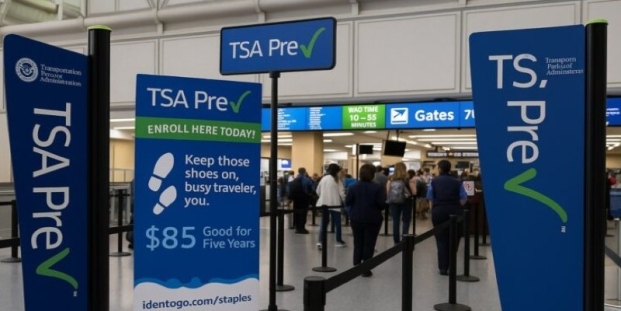
To qualify for TSA PreCheck, you must apply online and schedule an in-person interview, during which a background check will be performed. Once approved, you can use the expedited security lines at participating airports.
Global Entry For International Travelers
For those who travel internationally, Global Entry is another excellent option. This program offers the same expedited security benefits as TSA PreCheck and provides faster U.S. customs screening when arriving from abroad. The application process for Global Entry is similar to that of TSA PreCheck, but it involves an interview and fingerprinting.
Both TSA PreCheck and Global Entry can be worthwhile investments if you travel frequently. These programs enable you to bypass some of the more tedious steps in the security process, providing you with peace of mind and saving you valuable time.
5. Stay Organized: The 3-1-1 Rule And Beyond.
One of the best ways to streamline your airport security process is by staying organized, particularly when it comes to liquids, gels, and electronics. The 3-1-1 Rule is something every traveler should keep in mind to avoid unnecessary delays and security issues.
The 3-1-1 Rule Explained.
The 3-1-1 Rule allows you to bring liquids and gels in containers no larger than 3.4 ounces (100 milliliters) per item. All of these containers must fit inside a single quart-sized, resealable plastic bag. You are allowed one bag per traveler, and it must be placed in a bin for screening. This Rule applies to toiletries such as shampoo, conditioner, and lotions, as well as any other liquids you wish to carry on board.
To make this process easier, consider buying travel-sized containers that fit within the 3.4-ounce limit. This will not only keep you compliant but also minimize the amount of liquid you have to carry, helping to streamline your bag for quicker screening.
Electronics And Organizing Your Bag
Another essential item for efficient airport security is how you pack your electronics. Items such as laptops, tablets, and cameras often require separate screening; having these devices easily accessible will help reduce wait times. Consider placing them in a separate compartment of your bag so that you can retrieve them.
Additionally, some airports have dedicated bins for small electronics, such as phones, so keep your phone in a designated area that's easy to access. Staying organized with these items ensures that you won't waste time hunting for them when it's your turn to be screened.
6. Electronic Devices: What You Need To Know?
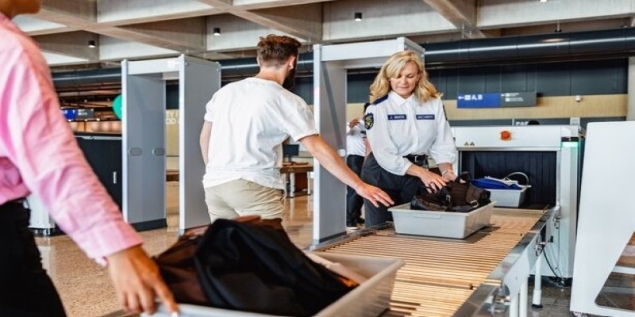
When traveling, your electronics are often the source of delays during the security process. Knowing how to handle them properly can significantly reduce the time spent at the checkpoint.
Laptops And Larger Electronics
For many travelers, the biggest challenge is managing laptops, tablets, and other large electronic devices. These items must be removed from your bag and placed in a separate bin for X-ray screening. This is to ensure that nothing is hidden inside these devices that could pose a security threat.
To make this process easier, pack your laptop or large devices in a way that allows you to quickly retrieve them without having to rummage through your bag. A dedicated compartment or sleeve can help prevent any unnecessary delay when it's time to retrieve them. It's also a good idea to keep your electronics powered on, if possible, as this can sometimes help speed up the process.
Smaller Electronics
Smaller electronics, such as phones, headphones, and cameras, typically don't require removal from your bag in most cases. However, you should still keep them in an easily accessible location. Some airports may ask you to remove items like these for additional screening, so having them in a separate pocket or compartment makes it easier for you and the TSA agent to access them quickly.
Remember that your phone should be fully charged, as some security personnel may request that you turn it on to confirm it's a functioning device. If you're carrying multiple electronic items, be mindful of where they are placed in your bag to minimize the chance of delays.
7. Choosing The Right Lane: How To Save Time?
Selecting the right security lane can make a significant difference in the amount of time you spend waiting in line. While it might seem like luck, there are strategies you can use to make an informed decision about which lane to choose.
Standard Vs. Expedited Lanes
Most airports offer a combination of standard security lanes and expedited lanes for programs such as TSA PreCheck or CLEAR. If you have TSA PreCheck or Global Entry, you should always aim for the expedited line. These lines are typically much shorter, allowing you to keep your shoes on, leave laptops and liquids in your bag, and move through the checkpoint faster.
If you're not enrolled in any expedited programs, you’ll need to opt for the standard lane. However, not all standard lanes are created equal. If you’re traveling during peak hours, such as early mornings or late evenings, it’s worth checking if any lanes are faster based on current wait times. Some airports display real-time wait times for different security lanes, giving you the option to make a more informed decision about which line to get in.
Peak Hours Vs. Off-Peak Times
One of the easiest ways to save time at the security checkpoint is by choosing the right time to travel. Security lines tend to be significantly longer during peak travel hours, such as early mornings, lunchtime, and evenings, especially around weekends or during holiday seasons. If possible, aim to travel during off-peak hours—mid-morning or mid-afternoon when the airport is less crowded. By avoiding peak times, you can potentially bypass long lines and get to your gate with less hassle.
Additionally, check your airport's website or apps for estimated wait times before you leave for your trip. This provides a clearer understanding of what to expect, enabling you to adjust your plans accordingly.
8. Managing Security Lines With Children And Special Needs
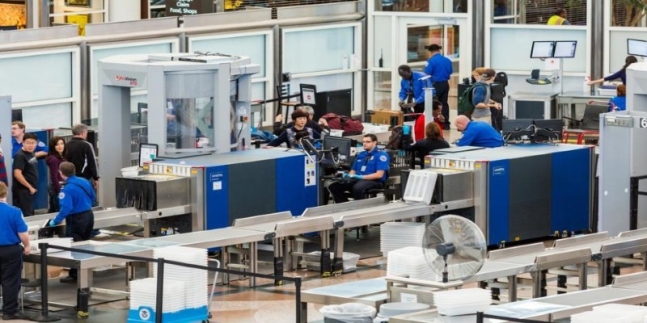
Traveling through airport security with children or individuals with special needs can require a little extra attention and preparation. However, with the right approach, you can make the process smoother for everyone involved.
Traveling With Children
If you're traveling with kids, it's essential to be prepared for delays during security screening. Children under the age of 12 are not required to remove their shoes, which can be a bonus. However, you'll still need to ensure they are ready for the screening process, which includes passing through metal detectors.
Ensure your child's carry-on items are organized, particularly snacks, toys, and other essentials. Be ready to separate these items from your bag for screening. It can be helpful to discuss the process with your child beforehand so they know what to expect. This reduces any anxiety and helps them follow instructions more easily during the screening.
Additionally, some airports offer family lanes, which can be a faster option for parents traveling with young children. Check ahead to see if your airport provides this service.
Special Assistance For Passengers With Disabilities
For travelers with special needs or disabilities, airports typically provide accommodations and assistance to facilitate a smoother security process. Passengers can request special assistance either in advance or upon arrival at the airport. Airport staff will guide you through the process, ensuring that you don't face unnecessary delays.
Most security checkpoints also have accessible lanes, allowing individuals with mobility devices (like wheelchairs or walkers) to pass through with more ease. If you require additional assistance, please don't hesitate to contact airport personnel to request help or clarify any specific needs.
Having a plan and knowing what assistance is available can significantly reduce stress and time spent at the security checkpoint, ensuring a smoother journey for everyone.
9. Keeping Calm: Psychological Tips For A Stress-Free Experience
Navigating through airport security can be stressful, especially when you're in a rush or dealing with unexpected delays. However, staying calm and maintaining a positive mindset can help you breeze through the process with less frustration.
Prepare Mentally For The Wait
One of the best ways to stay calm at security is by mentally preparing yourself for the wait. Please note that airport security can take some time, especially during peak hours. By accepting that this is just part of the travel process, you can avoid frustration. Bring a book, music, or entertainment to keep yourself distracted while in line. Having something to focus on will help you stay relaxed and patient.
Practice Deep Breathing
If you start to feel anxious, take a moment to breathe deeply and relax. Deep breathing helps activate your body's relaxation system and reduces the feeling of stress. Taking a few deep breaths before and after passing through the security checkpoint can calm your nerves and keep you focused.
Stay Organized And Positive
Staying organized can also help reduce stress. The more you prepare in advance, the less likely you'll face any surprises that could cause anxiety. A calm, organized approach leads to a smoother experience and prevents unnecessary stress from building up.
10. Dealing With Delays And Setbacks At Security
Sometimes, despite your best efforts, delays or setbacks happen at airport security. You may be flagged for additional screening, or your bag might need further inspection. While this can be frustrating, having a calm approach and knowing how to handle the situation will make things much easier.
What To Do If You're Flagged For Additional Screening?
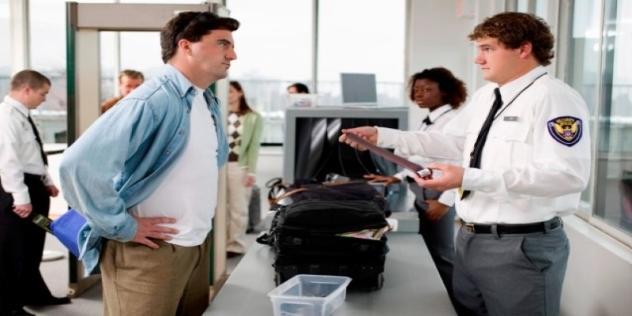
If you are flagged for additional screening, try to remain calm and cooperative. This is a routine part of airport security, and it's not a reflection on you personally. Typically, you'll be asked to step aside for a more thorough check of your bag or personal items. If this happens, be sure to follow the instructions given by the TSA agent. Avoid arguing or rushing the process; instead, remain patient and polite to prevent any further complications.
Lost Or Forgotten Items
If an item is left behind during the screening process or you realize you have forgotten something important at home, please notify the TSA staff immediately. Most airports have lost and found services, and items that are left behind will typically be stored and can be retrieved. Also, if you realize you're missing an important travel document, such as your boarding pass, most airports allow you to reprint it at a kiosk or customer service desk.
When Things Go Wrong, Keep Perspective
Finally, if your security experience isn’t perfect, try to keep it in perspective. Remember that the goal is your safety and the safety of everyone around you. A few minutes of inconvenience is worth the security that helps make your flight safe.
Smooth Security For A Smoother Journey
With the right strategies in place, airport security doesn’t have to be a stressful experience. By staying organized, dressing appropriately, and using programs like TSA PreCheck or Global Entry, you can significantly reduce the time spent at the security checkpoint. Whether you're traveling solo, with family, or with special needs, preparation is key. While delays and setbacks are sometimes unavoidable, keeping a calm mindset and being flexible will ensure a smooth experience from the checkpoint to the gate.
Was this helpful? Share your thoughts
- Learned practical methods
- Solved my questions
- Inspired new ideas
-
![First Time Flying? 35 Essential Travel Tips You Need to Know]() First Time Flying? 35 Essential Travel Tips You Need to Know
First Time Flying? 35 Essential Travel Tips You Need to Know -
Nervous about your first flight? Are you unsure about what to expect at the airport or how to make your journey as smooth as possible? For first-time flyers, air travel can seem overwhelming. But with a bit of preparation and the right mindset, you can manage airports and flights smoothly. This guide covers practical travel tips to help make your first flying experience smooth.
Explore More
-
![10 Warmest European Cities For Your Winter Trip]() 10 Warmest European Cities For Your Winter Trip
10 Warmest European Cities For Your Winter Trip -
Europe in winter isn’t always about snow and ice. If you’d rather trade frozen streets for sunny afternoons, there are plenty of cities where temperatures stay mild even in January and February. These destinations are perfect if you want outdoor dining, sightseeing without heavy coats, and fewer crowds than in summer.
Explore More
